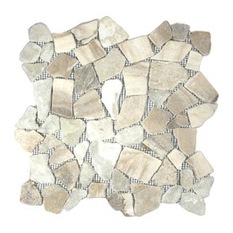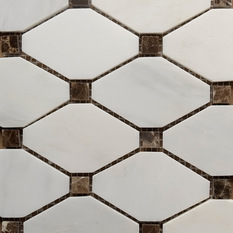Product Category
Style
Buying Options
Manufacturer
- The Tile Mural Store (USA) (3,990)
- Susan Jablon Mosaics (1,422)
- SomerTile (1,348)
- Tilesbay (1,299)
- Shades Of Stone (1,043)
- GBM Manufacturing (938)
- M S International, Inc. (748)
- MARBLEVILLE LLC (740)
- Premier Worldwide (508)
- Faber CNK Stone Corp. (333)
- Stone Center Online (313)
- Rocky Point Tile (225)
- Marble Systems (201)
- Home Elements Supply (193)
- Giorbello (169)
- Casa Daya Tile And Sink Co. (160)
- Tile Art Gallery (152)
- Knobco (120)
- GL Stone LTD (113)
- Eden Mosaic Tile (109)
- Premier Copper Products (96)
- Tiles R Us (93)
- MetalCoat Tile And Signs (86)
- Blancho Bedding (80)
- Toltec Lighting (68)
- Ceramic Designs By Albert (67)
- Vicci Design (60)
- LMT Tile Murals (54)
- Rachel's Mosaics (50)
- Moonish (44)
- Snapstone (42)
- SEVES S.p.A. (39)
- Art3d LLC (39)
- Tile Circle (36)
- Island Stone (34)
- Decorative Ceiling Tiles, Inc. (33)
- NewLinkz (33)
- Ekena Millwork (29)
- Mexican Tile Designs (28)
- Legion Furniture (28)
- LACAVA (27)
- Restoration Warehouse (27)
- Marbletiledirect (27)
- Alpine Corporation (26)
- Master Mark Plastics (22)
- Bodesi Glass Tile And Mosaic (21)
- Achim Importing Co. (20)
- Glenn Eldridge (20)
- Rustico Tile And Stone (18)
- The Copper Factory (18)
- IMAX Worldwide Home (16)
- SpectraMetal (16)
- J Schatz (16)
- National Brand Alternative (14)
- Polmedia Polish Pottery (12)
- L R Resources Inc (11)
- Natural Mosaic Tiles (10)
- IdeaStix Inc (10)
- ELK Group International (9)
- Safavieh (7)
- Udecor (7)
- Mark Lawrence Art (7)
- NOVA Interiors (6)
- Mosaic Tile Direct (6)
- Monoculo Design Studio (6)
- Textural Designs (6)
- Porcelanosa (5)
- Rock Products Import (4)
- Custom Made (4)
- Wellmade Floor Coverings Int'l, Inc. (4)
- Provenza (4)
- Realstone Systems (3)
- CMM Tile (3)
- Epic Art Decor (3)
- BuyMATS Inc. (2)
- Notting Hill Decorative Hardware (2)
- My Island (2)
- American Standard Brands (2)
- Uneek Glass Fusions LLC (2)
- Jelinek Cork Group (2)
- Mats (2)
- Daltile (2)
- Modern Day Accents (2)
- Schluter Systems (2)
- Midwest-CBK (2)
- GGI International (2)
- My Swanky Home (2)
- Progress Lighting (2)
- SoMi Tileworks (1)
- Arteriors Home (1)
- Phillips Collection (1)
- Tile Redi (1)
- Emser Tile (1)
- Danya B (1)
- Quoizel (1)
- Minka Aire (1)
- Uma Enterprises (1)
- Zeckos (1)
- Besa Lighting (1)
- Lacefield (1)
- See More...
Tile Material
Design
Shape
Finish
Width
Length
Thickness
- All Products /
- Bath /
- Tile
68,153 Tiles
Tile is a near essential element of any home design. It can be found from floor to ceiling — and everywhere in between. Most commonly in the form of wall or backsplash tile in kitchens and bathrooms, they can be made from all sorts of materials, such as ceramic, travertine, glass, porcelain, mirror, slate and marble. It can be both exciting and overwhelming to pick out the ideal tile, but these tips should help you in your quest. More
Sponsored Products
6" Solid Copper Wall Tile with Flower & Right Side Leaves Decor - Antique Copper
$13.95 | Signature Hardware
Mosaic Long John Pendant by Oggetti Luce
$544.00 | Lumens
SomerTile 12x12-in Mesa Gris Ceramic Floor and Wall Tile (Case of 21)
$114.99 | Overstock.com
4" Solid Bronze Wall Tile with Fleur-De-Lis Design
$29.95 | Signature Hardware
Tile Wall Clock by LEFF Amsterdam
$199.00 | Lumens
Karen Line Voltage Rail Kit by Nora Lighting
$379.90 | Lumens
Sell on Houzz - Learn More
What do I look for in kitchen tiles?
Backsplash tiles will always be a focal point of the kitchen. Whether you’re doing a complete remodel or just updating your kitchen tile backsplash, think about how they will play with other elements, such as cabinets and countertops. If you want something bold, pick a colorful subway tile or mosaic tiles that contrasts with your current materials and colors. Travertine or more subtle colored ceramic tiles will give a softer look. Subtle does not have to be boring though; visual interest can also be created with an interesting pattern, such as a herringbone or diagonal design.
Kitchen wall tiles are bound to be splattered with sauces and oils. Clean up and maintenance can be a major factor in your decision, so keep placement and material in mind. Backsplash near the stove or sink will require the most attention. Light colors with no pattern will tend to show more food and water spots than a darker or patterned option. Marble and granite tiles with lots of swirling and color variation will hide small spots well. Consider the size of the tiles you will be using; smaller size means more grout, which means more maintenance.
What do I look for in bathroom tiles?
There’s no doubt that bathroom tile is going to get wet. Water and tile can be a slippery combination, but luckily design has come a long way. Look for shower tile with high slip-resistance ratings, since this will help reduce the risk of falling. Oftentimes homeowners who prefer wood over stone or ceramic will use tile that looks like wood in the bathroom to help create a cohesive look throughout their home. Glass tiles are also popular in the bathroom because of their light, slick look. If you have curves in your bathroom, small tiles are a better alternative for you, since they are easy to manipulate around tricky slopes and angles.
Because of the moisture, bathroom tile will require even more maintenance than other rooms. Hate cleaning all of the grout in your bathroom? Use larger slabs to minimize the amount of grout. Smaller pieces do provide better traction, but they can be a pain to keep clean. If you plan on aging in your home, bigger slabs will lend themselves well to universal design. In the end, don’t be afraid to mix and match coordinating materials and sizes to achieve a safe and beautiful design.















































